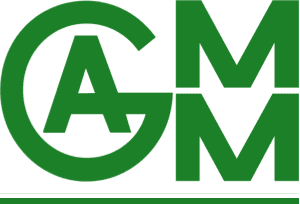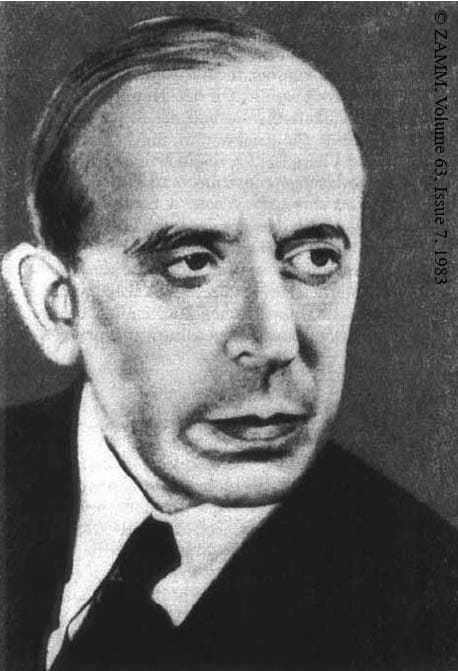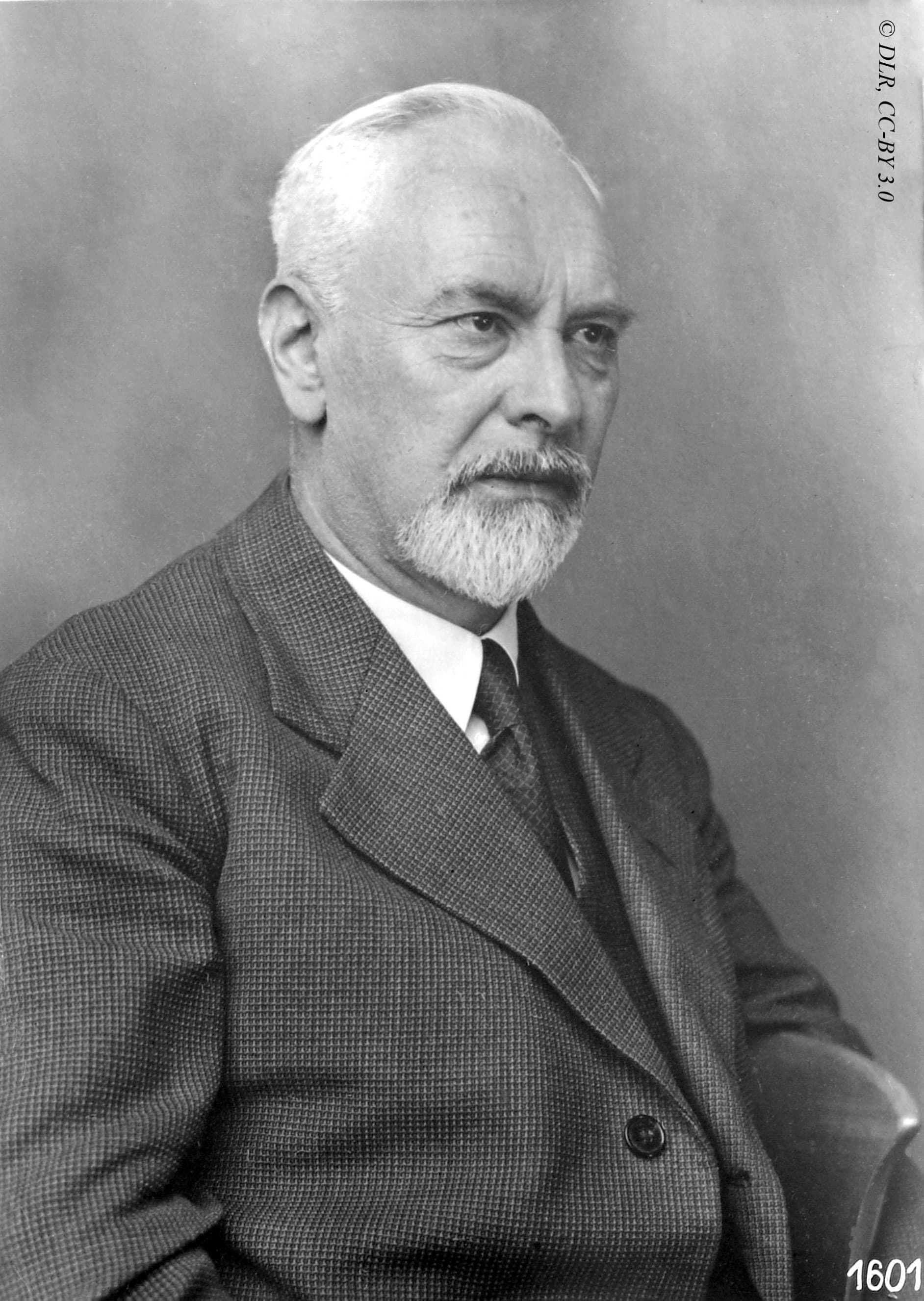The Society of Applied Mathematics and Mechanics (GAMM, “Gesellschaft für Angewandte Mathematik und Mechanik”) has its roots in the joint meetings of the German Mathematical Society, the German Physical Society, and the German Society for Technical Physics. It was founded in 1922 by Ludwig Prandtl and Richard von Mises. Following the motivation of the founding fathers, our scientific organization encourages the international cooperation of applied mathematics with all subfields of mechanics and physics, which are among the foundations of engineering sciences. Thus, GAMM promotes the scientific development of applied mathematics and mechanics and has been able to contribute significantly to progress in hydro- and aerodynamics, solid mechanics, numerical mathematics and mathematics for industrial applications. The society has an international orientation and today comprises about 1400 members.
Left: Richard von Mises (April 19, 1883 – July 14, 1953). Right: Ludwig Prandtl (February 4, 1875 – August 15, 1953).
©All rights reserved.
The foundation of GAMM is closely related to the foundation of the Journal of Applied Mathematics and Mechanics (ZAMM, “Zeitschrift für Angewandte Mathematik und Mechanik”) by Richard von Mises in 1921. Motivated by the economic situation after the First World War, engineers, among others, displayed a particular responsibility for the reconstruction of Germany, which is reflected in the versatile activities of the VDI, the Association of German Engineers. Committees for technical mechanics and physics were formed in some of the district associations, which devoted themselves to topics such as the calculus of differences and vector calculus as well as their applications in engineering, elastic and inelastic deformations for special constructions, and a logarithmic integration device. A finding in the meeting of the board of directors of the VDI on September 19, 1920 stated: “It is astonishing how simple methods [vector calculus, difference calculus, conformal mappings] can be used to solve many technical problems (Es ist erstaunlich, auf wie einfachem Wege […] man viele technische Probleme hierdurch lösen kann.)” (Z.-VDI 65, 1921, page 54). Although the VDI had already been publishing research papers in the form of individual booklets for 19 years, it was of great importance to the Committee for Mathematics and Mechanics to continuously publish short critical reports on current topics in addition to sporadically appearing extensive original papers. The foundation of ZAMM, which began to appear in 1921, was based on this foundation. The guiding principle of Richard von Mises is particularly noteworthy here:
To overcome the boundaries between pure mathematics and the application of mathematical theories, especially in the engineering sciences.
This policy was and is of great importance for our interdisciplinary acting scientific community. The 100th anniversary of ZAMM was taken as an opportunity to produce a series of selected publications highlighting the developments since the beginning of the journal. The first article [2 R. Siegmund-Schultze, “The joy that engineers and mathematicians have come together.” Richard von Mises’ foundation of ZAMM, and its “tasks and goals” (1920/21). ZAMM Z. Angew. Math. Mech.100, e202002017, 26 (2020) ] in this series recounts the beginnings of ZAMM.
Left: CC-BY-4.0, Middle and Right: All rights reserved.
GAMM regularly initiates annual meetings at different locations in Germany and nearby European countries. A first meeting, or rather, an informal gathering with representatives of hydro- and aeromechanics, took place in Innsbruck in 1922. In 1925, GAMM held its first scientific meeting in Dresden. There were annual meetings until 1938, which in the following years took place only under difficult and limited conditions until 1943. After the Second World War, GAMM resumed its activities in 1950 with the Darmstadt meeting. This meeting is of particular importance because a new foundation of GAMM was not necessary due to the merger of the societies of the English and American zones. A broad spectrum of keynote lectures on the disciplines represented in GAMM and the Ludwig Prandtl Memorial Lecture organized jointly with the German Aerospace Society (DGLR, “Deutsche Gesellschaft für Luft- und Raumfahrt“) since 1957 are complemented at the annual meetings by mini-symposia on current developments in applied mathematics and mechanics and further sections with short lectures. The sections are dedicated to particular fields and offer the opportunity, especially for younger participants, to introduce themselves and their work to the scientific community. An outline of the history of GAMM up to the 1970s can be found in [1 H. Gericke, “50 Jahre GAMM”. Beiheft zum Ingenieur-Archiv 41 (1972) ].
GAMM establishes GAMM activity groups (“GAMM Fachausschüsse“) on request of its members for current research topics, aimed at further differentiation and specialization of scientific issues. They were established in the early 1950s and today contribute significantly to developing important future areas of applied mathematics and mechanics. There are currently 17 activity groups, which largely shape the scientific activities of the society outside the annual meetings. For this purpose, they organize seminars and workshops, participate in the organization of large national and international conferences, and prepare statements on particular problems from the point of view of the respective committee. The activity groups are established for a term of 11 years and are evaluated twice during this period.
Since 1989, GAMM has annually awarded the Richard von Mises Prize for outstanding scientific achievements in applied mathematics and mechanics. The prize promotes young scientists and includes a certificate, a free two-year membership, and prize money. Traditionally, this award is presented during the opening session of the GAMM annual meeting, at which the awardees prominently present their research results in a keynote lecture.
Thanks to the legacy of Dr. Klaus Körper, the Dr. Klaus Körper Foundation was established in 2011. It awards four prizes annually for the best dissertations of the past year in applied mathematics and mechanics.
An important task of GAMM is to recruit new members and to support these young scientists in building their careers. The GAMM Juniors deserve special mention in this context. They have established themselves as an essential part of our organization. For example, since 2017, a YAMM (Young Academics Meet Mentors) Lunch has been organized at our annual meeting. Here, young academics have the opportunity to ask experienced scientists questions about career paths and opportunities. Furthermore, in 2021, the GAMM Juniors organized a pre-GAMM event for the first time as part of our annual meeting. This event was a great success in preparing young scientists for the keynote lectures of our 91st annual meeting.
The GAMM Student Chapters, introduced in 2018, have taken their first steps and form another important building block for new impulses to make GAMM attractive and sustainable. Currently, eight Young Investigator Groups strengthen interdisciplinary collaboration and exchange in applied mathematics and mechanics between master students, Ph.D. students, and scientists. They organize a variety of activities ranging from barbecue parties to workshops and excursions.
In addition to the already mentioned ZAMM, the GAMM-Mitteilungen with scientific contributions are published quarterly, the GAMM-Rundbrief with generally understandable editorials and socio-political information is published semi-annually, the PAMM (Proceedings in Applied Mathematics and Mechanics) with contributions of the GAMM annual meetings is published once a year, and recently also a GAMM student journal has been established.
In my view, today more than ever, the sciences have a responsibility to society as a whole to provide adequate advice to other institutions through knowledge-based findings. Interdisciplinary work and a lively exchange with other scientists are a necessity for these purposes. GAMM meets this challenge through its continuous development and the commitment of its status groups.
For further information on GAMM and our activities, please visit the website www.gamm-ev.de.
References
- H. Gericke, “50 Jahre GAMM”. Beiheft zum Ingenieur-Archiv 41 (1972)
- R. Siegmund-Schultze, “The joy that engineers and mathematicians have come together.” Richard von Mises’ foundation of ZAMM, and its “tasks and goals” (1920/21). ZAMM Z. Angew. Math. Mech.100, e202002017, 26 (2020)
Cite this article
Jörg Schröder, The International Association of Applied Mathematics and Mechanics. Eur. Math. Soc. Mag. 121 (2021), pp. 45–47
DOI 10.4171/MAG/41


